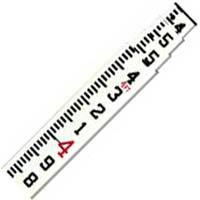Mapping Katrina's Storm Surge - Part II
 Though not complete, initial reports from the surveyors that are mapping Hurricane Katrina's storm surge seem to indicate that Katrina's storm surge was as bad as anything ever seen along the Mississippi gulf coast. "The flood elevations are extraordinarily high," FEMA's Todd Davison told the Sun-Herald. "Anybody who has studied storm surge, these are well in excess of 100-year flood numbers."
Though not complete, initial reports from the surveyors that are mapping Hurricane Katrina's storm surge seem to indicate that Katrina's storm surge was as bad as anything ever seen along the Mississippi gulf coast. "The flood elevations are extraordinarily high," FEMA's Todd Davison told the Sun-Herald. "Anybody who has studied storm surge, these are well in excess of 100-year flood numbers."Data Collection
The mapping of Katrina's storm surge in Mississippi, which has been described as, "forensic meteorology" is a team effort, with surveyors from the U.S. Geological Survey, the Army Corps or Engineers, and URS Corporation, an international engineering firm, performing the measurements. The survey crews most commonly look for water marks on the inside of buildings. Waves don't blur the true height of the surge inside buildings. Once they've located a water mark, they determine the elevation of the mark, not always an easy task in an area where many of the benchmarks have been washed away. While the surveyors continue to refine their data, early indications are the Katrina's storm surge reached as high as 28 feet.
Map Preparation
FEMA, which is spearheading the project, plans to use the data to update it's 100-year flood plain maps. However, the new 100-year flood plain elevations shown on the updated maps may not be as high as Katrina's storm surge. Experts think such an event is beyond the pale of a 100-year flood event. "It's fair to say the 100-year is going to go up," Davison told the Sun-Herald, "but they won't go to the Katrina levels." FEMA has already released suggestions to local officials on how to rebuild, based on predictions of what the ultimate revised 100-year flood elevation will be. FEMA plans to release the first round of tabular data this week, with a high-resolution map available online by mid-November.




<< Home